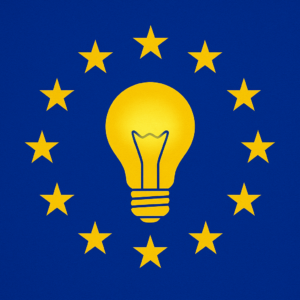Headquarters: Svetog Nauma 7, 11000
Office address: Đorđa Vajferta 13, 11000
Phone:: +381 11 4529 323

Negotiations within the EU are never easy – whether they concern foreign policy, deeper integration, or enlargement. Yet none of these areas provoke as much intense debate as the Multiannual Financial Framework (MFF). This is understandable, given that the MFF sets the EU’s strategic development direction over a seven-year period. This time around, negotiations are underway for the budget covering the years 2028 to 2034. Given the importance of the topic, the following outlines the stakes of the negotiations, the key innovations introduced by the proposed MFF, and the plans for enlargement policy.
Why Is This Such a Hot Topic?
As always, the disputes centre around two key issues: determining the maximum amount of funding for the new MFF, and how the funding allocation will be prioritised across various areas.
As for the size of the MFF, the previous MFF totalled nearly €1.3 trillion (in current prices, including the 2024 top-up). The new proposal envisions €1.8 trillion to finance all planned EU programmes – or roughly €2 trillion when debt repayments from the pandemic period are included. This represents an increase of around 50% compared to the previous framework. Because of this, the Commission is proposing the introduction of new sources of EU own revenue – such as an additional tax on companies with an annual turnover of more than €100 million – which would account for up to 20% of the total amount of the new MFF. Unsurprisingly, countries like Germany have already objected, claiming the proposed budget is too high, while the corporate sector has also voiced concerns over potential new fiscal burdens. Although views on the total amount vary, past experience shows that the Commission typically puts forward maximalist proposals, which are adjusted during negotiations– though they still tend to remain higher than the outgoing framework.
Even if a swift agreement were reached on the total amount, the next battle would concern how the funds are distributed across specific areas. Given that the 27 member states share certain common goals but also pursue their own national interests, this is reflected directly in their negotiating positions. For instance, net-recipient countries and those with lower economic performances than their wealthier counterparts will push for more investment in cohesion policy. Countries with strong agricultural sectors and influential unions, such as France, will advocate for increased spending on the Common Agricultural Policy. Member states facing greater threats – such as Italy and Spain under migration pressure, or the Baltic states bordering Russia – will insist on defence and support for Ukraine. As this is only the first draft of the new MFF, the next two years will see difficult negotiations that will test European unity and its ability to translate divergent views into a sustainable compromise.
What Are the Key Innovations?
The new MFF marks a radical departure from the EU’s current financial and programme management practices. Without going into every detail, here are three major features worth highlighting:
What Are the Plans for Enlargement Policy?
All matters relevant to enlargement will be consolidated within one of the four main pillars of the new MFF – Global Europe.” With a planned budget of €200 billion, this pillar includes programmes and funds aimed at projecting the EU’s influence globally. Of that total, around €43 billion is earmarked for the budget line “Enlargement, Eastern Neighbourhood, and Rest of Europe”. According to Enlargement Commissioner Marta Kos, this represents a 37% increase compared to the outgoing framework. While this is certainly encouraging, it is still too early to celebrate, as the Commission has yet to disclose how much of this €43 billion will specifically be allocated to the Western Balkans. Until 2027, for instance, the region was slated to receive about €14 billion in grants through the Instrument for Pre-Accession Assistance (IPA III) and the New Growth Plan (NGP). If the amount earmarked for the region increases in the new MFF – ideally to around €21 billion, according to an analysis – it would send a strong signal that the EU is ready to step up its role and genuinely invest in its future member states.
Although the proposed figures may still be revised, certain items are expected to stay unchanged. First, there is currently no reason to fear that prioritising Ukraine will negatively impact fund allocations for the Western Balkans. Aid for Ukraine’s reconstruction will be channelled through a dedicated €100 billion fund, which falls outside the “Global Europe” pillar and constitutes additional, standalone financing. Second, enlargement funds will continue to follow the conditionality principles already established through the New Growth Plan. Since the rule of law is a core priority of the entire MFF, it is expected that the same principle will apply to enlargement – clearly signalling a continuation of value-based funding. Finally, the new MFF explicitly provides for the possibility of revision in the event that new countries join the EU, demonstrating flexibility and a readiness to adapt the financial framework to future enlargement, if need be. Whether and to what extent these and other Commission plans will be realised as intended will become clear in two years, when all member states and the European Parliament give their final approval to this Multiannual financial framework.
Previously published on EUpravozato.